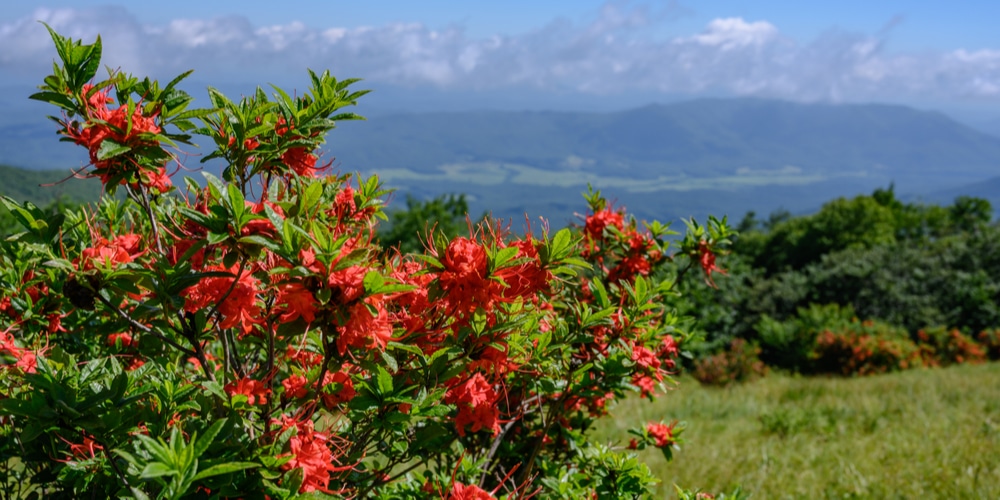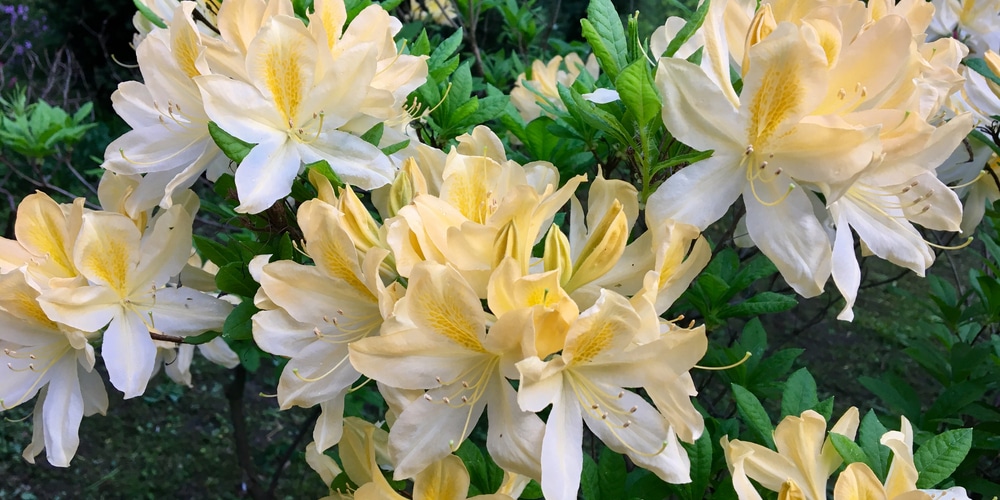Azaleas will no doubt bring a splash of color to your garden or landscape, but are these plants beneficial to the surrounding wildlife as well? More specifically, do azaleas attract butterflies?
Butterflies do in fact love to hover around azaleas and drink the nectar that comes out of the eye-catching blooms. If you’re planning to build a garden or a collection of plants to bring in pollinators, then you can start by planting azaleas.
Do Azaleas Attract Butterflies?

Azaleas serve as the perfect addition to a colorful yard, with a bonus of making butterflies drop by in your garden to have a look (and possibly a sip).
The best thing about azaleas is that they’re pretty easy to grow and they produce seemingly endless bright flowers from spring through fall.
How lovely is it to have fluttering and different-colored butterflies in your yard? If you want to bring more oohs and aahs to the landscape show then planting azaleas is a good idea.
There are many different butterflies that are attracted to azalea plants, but some specific examples include grey comma butterflies, swallowtail butterflies, and great spangled fritillaries, among others.
In a more general term, butterflies are more attracted to flowers with pink, orange, yellow, purple, and red colors.
Form and shape play a significant role as well- these winged insects are believed to visit flowers that have shorter tubes and flat clusters. Like bees, butterflies prefer to collect nectar in flowers that are easier to ‘access’ rather than many-petaled blooms with nectars that are deep within.
What Flowers Attract Butterflies the Most?
A butterfly garden is possible with the help of these flowering plants:
- Lantana
- Butterfly Bush
- Heliotrope
- Lavender
- Butterfly Weed
- Sunflower
You can mix and match depending on where you live (growing zone) and availability as well. Azaleas thrive in rich and well-drained soil that gets regular watering, so you can pair them with plants that have the same growing requirement.
How to Prolong Azalea Flowering to Attract More Butterflies
Make Sure the Soil is Acidic
Azaleas prefer well-drained soil that’s on the acidic side, with a pH range of 4.5 to 6 in order to thrive. These plants also want a medium that’s rich in nutrients, particularly organic matter, and compost.
Do soil pH testing with a garden meter and amend your soil with peat moss, pine mulch, or agricultural sulfur to make it more acidic.
Provide Plenty of Nutrients
Aside from providing compost and organic mulch, it’s also best to feed your azaleas with a balanced mix of NPK, or nitrogen, phosphorus, and potassium, or the slow-release variety. This should be done early or mid-spring and just as flower buds are beginning to form.
Azaleas don’t need too much fertilizing if they’re getting regular mulch and compost. Also, you should only feed once per growing season so your plants won’t get overwhelmed and produce excessive foliage.
Water Well
Azaleas will like their roots well-watered, especially during hot days and warm weather. Along with acidic soil, your maintenance routine should consist of checking if the top inch or two of the azaleas’ soil is dry using a moisture meter or your fingers.
Plants will need water to produce flowers, and azaleas are no different. As a general rule, you should keep the soil consistently moist but not waterlogged; too much watering is just as harmful as your azaleas not getting enough.
Hold Off on Pruning
Azaleas generally do not require pruning except when you’re deadheading or removing dried and dead leaves and stems. It’s worthy to note that azaleas typically grow new shoots and buds on last year’s growth, so if you remove them via pruning then your azaleas won’t be able to produce flowers.
Do not cut back azaleas, especially in the growing season so they can flower more, and thus attract more butterflies.
Deadhead
Deadheading is the practice of removing ‘spent’ flowers, or those that are past their prime. Once the blooms start to wilt and discolor, consider cutting them off so the plant is encouraged to produce more buds.
As always, you should deadhead using a sharp pair of pruning or garden shears that have been sterilized to prevent possible azalea infections.
Related Article: How Far Apart to Plant Azaleas

